http://www.rhci-online.net/radiogram/radiogram.htm
2018-08-06 file KG5JST radiogram #1 [reverse MFSK] ===> KG5JST@Gmail.com
blog.jmb.mx2018-08-08 1800-1900z 6070 kHz Slow Scan Radio #3 -sonogram-
===> x@xdv.me www.slowscanradio.com2018-08-08 2025-2030z 6070 kHz IBC DIGITAL ===> ibc@europe.com www.ibcradio.webs.com
2018-08-10 2030-2100z 7780 kHz SWRG #60 ===> radiogram@verizon.net
swradiogram.net2018-08-11 1530-1531z 9400 kHz & 2018-08-12 0130-0131z 9925 kHz KBC ===> themightykbc@gmail.com
www.kbcradio.eu2018-08-12 0000-0200z 9925 kHz KBC [Meteor Scatter - Perseids]
2018-08-12 1358-1359z 6070 kHz Radio PowerRumpel MFSK-64 ===> radiopr@partyheld.de
2018-08-13 0730z 7730 kHz BSR#16 repetition [reverse MFSK] -sonogram-
2018-08-13 0730z 7730 kHz BSR#16 repetition [reverse MFSK] -txt- ===> broadspectrumradio@gmail.com
www.broadspectrumradio.com
|
RSID: <<2018-08-08T20:25Z MFSK-32 @ 6070000+1500>>
START IBC - ITALIAN BROADCASTING CORPORATION
mail: ibc@europe.com
"IBC DIGITAL" "IBC DIGITAL"
|
|
|
RSID: <<2018-08- 12T01:30Z MFSK-64 @ 9925000+1500>>A scene from Skyline Drive in the Shenandoah National Park, Virginia, USA... Sending Pic:118x86C;
|
|

RSID: <<2018-08-10T20:31Z MFSK-32 @ 7780000+1500>>
Welcome to program 60 of Shortwave Radiogram.
I'm Kim Andrew Elliott in Arlington, Virginia USA.
Here is the lineup for today's proogram, in modes as noted:
1:38 MFSK32: Program preview (now)
2:58 Astronomers discover new planet not orbiting any star*
7:55 20x63PSKR: Chinese news outlets cover Africa
8:59 MFSK128: Clues to ancient mysterious star blast*
13:33 MFSK64: Hydrogen wall at solar system's edge*
17:34 Solar-powered aircraft smashes duration record*
21:25 This week's images*
28:24 MFSK32: Closing announcements
* with image(s)
Please send reception reports to
radiogram@verizon.net
And visit http://swradiogram.net
Twitter:
@SWRadiogram
Astronomers Discover New Planet Not Orbiting Any Star
VOA News
6 August 2018
Astronomers have discovered a planet outside our solar system
that is 12 times the size of Jupiter, striking not only for its
size but also for the fact that it is not orbiting any star.
The so-called "rogue" planet does not revolve around a star, but
instead rotates around the galactic center in interstellar space.
Astronomers say there have been only a few rogue planets
discovered to date. They say even though finding such celestial
objects are rare, there could be large amounts of such planets in
the universe that have yet to be discovered.
The recently discovered planetary mass was originally found in
2016 but was mistaken for a brown dwarf planet. According to new
research published in the Astrophysical Journal, the object is
now thought to be a planet in its own right, with an usually
strong magnetic field.
Astronomers say the magnetic field of the new planet, named SIMP
J01365663+0933473, is more than 200 times stronger than
Jupiter's. They say its strong magnetic field likely led to its
being detected by a large radio-telescope in New Mexico known as
the National Science Foundation's Karl G. Jansky Very Large Array
(VLA).
The planet is thought to be 200 million years old and is 20
light-years from Earth.
https://www.voanews.com/a/astronomers-discover-new-planet-not-orbiting-any-star/4516684.html
See also:
https://newatlas.com/giant-planet-brown-dwarf-magnetic-field/55762/
Image: An artist's rendition of SIMP J01365663+0933473, a massive
rogue planet ...
Sending Pic:217x185C;

Shortwave Radiogram now changes to 20x63PSKR ...
RSID: <<2018-08-10T20:38Z
20xPSK63R
@ 7780000+1500>>
This is Shortwave Radiogram in 20x63PSKR.
Please send reception reports to
radiogram@verizon.net
VOA NEWS
With a Positive Spin, Chinese News Outlets Cover Africa
Salem Solomon
8 August 2018
In Rwanda, a Chinese-owned garment factory provides jobs to
hundreds of local workers. In Ethiopia, a Chinese-built railway
makes life easier for business owners and travelers. In Zambia, a
Chinese-funded television project will bring satellite TV to 500
villages.
Each of these stories, published by Xinhua, China's state-run
news organization, typifies the country's coverage of Africa.
Rather than focus on corruption or disasters, China's news about
Africa emphasizes positive angles, especially when it comes to
the Communist Party's deepening involvement across the continent.
It's a media strategy that highlights China's mutual interests
with Africa and reflects its broader approach to soft power, even
if the whole story isn't told.
Positive news angles
In Chinese media, "what comes across is the government's
interests," Emeka Umejei, a research associate in the Department
of Journalism and Media Studies at Wits University in
Johannesburg, South Africa, told VOA.
Chinese news organizations don't perpetuate outright
disinformation, Umejei said, but coverage of Africa is shown in a
positive light when stories implicate China. That amounts to
propaganda, according to Umejei, because the goal isn't just to
inform, but also to shape perceptions of the ruling Communist
Party.
Unlike Western outlets, which tend to focus on corruption,
misdeeds and transgressions, Chinese media highlight good things
happening in Africa.
One example is Kenya's Standard Gauge Railway, a project
financed, built and managed by China.
Local media have reported on a range of concerns tied to the
railway's impacts on Kenya's wildlife, economy and workers.
Last month, the Sunday Standard, one of Kenya's largest and most
reputable newspapers, published an exposé on the treatment of
African workers involved with the railway.
In the report, the Standard alleged widespread racism,
discrimination and mistreatment of Kenyans, based on interviews
with locomotive drivers and other workers.
The news wasn't acknowledged in Chinese media. Instead, its
coverage of the SGR has focused on the benefits the project
brings to Kenya.
In a recently published opinion piece, He Wenping, a senior
research fellow at the Charhar Institute, a think tank focused on
China's foreign relations, underscored how well the SGR has moved
people and freight.
"The Mombasa-Nairobi Railway has also greatly facilitated the
mobility of people between Mombasa and Nairobi, and the freight
transport time has been shortened from more than 10 hours to more
than 4 hours, thus reducing the logistics costs by over 40
percent," she wrote.
Paying dividends?
Some research suggests that China's soft power campaign and media
strategies are working.
Afrobarometer, an African research network, reported in 2016 that
about two-thirds of Africans see China's influence as "somewhat"
to "very" positive. And more African countries now see China -
not the U.S. - as the biggest foreign influence.
In 2017, Pew Research found that 72 percent of Nigerians viewed
China favorably - a higher percentage than any other country
polled. More than half of respondents in Senegal, Tanzania,
Tunisia and Kenya also reported favorable sentiments.
Chinese media
Chinese news organizations are large, centralized and
well-funded.
Xinhua is the country's official news agency, with English
reports published across the web via a network of affiliates.
In research published in 2011, Junhao Hong, a professor at the
University of Buffalo, concluded that Xinhua evolved from a pure
"propaganda machine" in the late 1970s to a multifaceted
enterprise concerned with generating revenue, serving the
Communist Party's interests and producing news for a worldwide
audience.
Xinhua's distribution partners include state media in Africa.
Fana Television, a state broadcaster in Ethiopia, has republished
or relied on reporting from nearly 20 Xinhua news stories since
the beginning of the year.
China Central Television, or CCTV, is the most dominant broadcast
news organization. In March, the Communist Party announced it
would merge CCTV with two other broadcast entities to streamline
operations and enable what Umejei called a "unified narrative."
'Win-win' coverage
In China, "investigative reporting isn't allowed," Umejei said.
That means the powerful aren't held to account. But it also
creates space for uplifting stories that show another side of
Africa. It's an approach that resonates with African audiences,
Umejei said, given what can come across as a fixation in Western
media on Africa's problems.
Unrelenting stories about conflict, famine, disease and
corruption have led to criticism that Western portrayals of
Africa, at times, play to outmoded stereotypes, perpetuate myths
and underrepresent positive developments.
China has taken a different tact with what Umejei calls a
"win-win" media strategy that puts both Africa and China in a
flattering light. The strategy also complements China's approach
to soft power in Africa, wherein it frames itself as a benevolent
partner with similar goals and challenges.
But critical coverage has an important role in the new ecosystem,
according to Umejei.
Investigative journalism is "good for Africa" because it holds
powerful people accountable, he said.
https://www.voanews.com/a/positive-spin-china-news-outlets-cover-africa/4518628.html
Shortwave Radiogram now changes to MFSK128 ...
RSID: <<2018-08-10T20:39Z MFSK-128 @ 7780000+1500>>
This is Shortwave Radiogram in MFSK128
Please send reception reports to
radiogram@verizon.net
From Futurity.org:
Nature's 'time machine' reveals clues to mysterious star blast
University of Arizona
8 August 2018
A prolonged stellar brawl among three rowdy sibling stars may
have triggered a mysterious eruption by the brightest known star
in our galaxy, according to new research.
About 170 years ago, the blast unleashed almost as much energy as
a standard supernova explosion. Yet, Eta Carinae-a star that's
part of a system 7,500 light-years away inside the Carina nebula,
a vast star-forming region seen in the southern sky-survived.
An explanation for the eruption has eluded astrophysicists. They
can't take a time machine back to the mid-1800s to observe the
outburst with modern technology. However, astronomers can use
nature's own "time machine," courtesy of the fact that light
travels at a finite speed through space.
Rather than heading straight toward Earth, some of the light from
the outburst rebounded or "echoed" off of interstellar dust, and
is just now arriving at Earth. This effect is called a light
echo. The light is behaving like a postcard that got lost in the
mail and is only arriving 170 years later.
By performing modern astronomical forensics of the reflected
light from the blast, researchers may be closer to solving the
mystery of Eta Carinae's eruption.
Star burst
The tussle among the stellar siblings may have culminated with a
violent explosion when Eta Carinae devoured one of its
companions, rocketing more than 10 times the mass of our sun into
space. This ejected mass created two gigantic bipolar lobes
resembling a dumbbell shape that is visible in present-day
images.
The surprise is that new measurements of the 19th century
eruption reveal material expanding with record-breaking speeds of
up to 20 times faster than astronomers had expected. The observed
speeds are more like the fastest material ejected by the blast
wave in a supernova explosion, rather than the relatively slow
and gentle winds expected from massive stars before they die.
Researchers detected the light echoes in visible-light images
obtained since 2003 with moderate-sized telescopes at the Cerro
Tololo Inter-American Observatory in Chile. Using larger
telescopes at the Magellan Observatory and the Gemini South
Observatory, both located in Chile, the team used spectroscopy to
dissect the light, allowing them to measure the ejecta's
expansion speeds.
They clocked material zipping along at more than 20 million miles
per hour-fast enough to travel from Earth to Pluto in a few days.
New clues, new theory
The observations offer new clues to the mystery surrounding the
titanic convulsion that made Eta Carinae the second-brightest
nighttime star in the sky, as seen between 1837 and 1858. The new
data hint at how it may have come to be the most luminous and
massive star in the Milky Way galaxy.
"We see these really high velocities in a star that seems to have
had a powerful explosion, but somehow the star survived,"
explains Nathan Smith of the Steward Observatory at the
University of Arizona. "The easiest way to do this is with a
shock wave that exits the star and accelerates material to very
high speeds."
Massive stars normally meet their final demise in shock-driven
events when their cores collapse to make a neutron star or black
hole. Astronomers see this phenomenon in supernova explosions
where the star is obliterated.
So how do you have a star explode with a shock-driven event but
not have it completely blow itself apart? Some violent event must
have dumped the right amount of energy onto the star. The energy
was too much for the star to hold onto and it ejected its outer
layers.
One possibility for just such an event is a merger between two
stars, but it has been hard to find a scenario that could work
and match all the data on Eta Carinae. The researchers suggest
that the most straightforward way to explain a wide range of
observed facts surrounding the eruption is with an interaction of
three stars, where the objects have exchanged mass.
If that's the case, then the present-day binary system must have
started out as a triple system.
Laying out the case
"If we merged two stars and we're left with two, there must have
been three to begin with," Smith says. "The reason why we have
this crazy triple system that interacts is because we need an
explanation for how the present-day companion quickly lost its
outer layers before its more massive sibling."
In the team's proposed scenario, two hefty stars are orbiting
closely and a third companion is orbiting farther away. When the
most massive of the close binary stars nears the end of its life,
it begins to expand and dumps most of its material onto its
slightly smaller sibling.
The sibling has now bulked up to about 100 times the mass of our
sun and is extremely bright. The donor star has been stripped of
its hydrogen layers, exposing its hot helium core. Hot helium
core stars are known to represent an advanced stage of evolution
in the lives of massive stars.
"From stellar evolution, there's a pretty firm understanding that
more massive stars live their lives more quickly and less massive
stars have longer lifetimes," explains Armin Rest of the Space
Telescope Science Institute in Baltimore, Maryland.
"So the hot companion star seems to be further along in its
evolution, even though it's a much less massive star than the one
it is orbiting. That doesn't make sense without a transfer of
mass."
The mass transfer also alters the gravitational balance of the
system, and the helium-core star moves farther away from its
monster sibling. As a consequence of this widening separation,
the helium-core star interacts gravitationally with the outermost
star, pulling it into the fray. The two stars trade places, and
the outermost star gets kicked inward. It makes a few close
passes, interacting with its heavyweight partner before the two
stars merge.
That merger process involves a spiraling-in phase that lasts many
decades, during which time the two stars may have been inside a
bloated common envelope or cocoon of mass around the merging
system.
In the outburst's initial stages, the ejecta was dense and
expanding relatively slowly as the two stars spiraled closer and
closer. Later, an explosive event occurred when the two inner
stars finally merged together, blasting off material moving 100
times faster.
This material eventually caught up with the slow ejecta and
rammed into it like a snowplow, heating the material and making
it glow. This glowing material was the light source of the main
historical eruption seen by astronomers a century and a half ago.
Meanwhile, the surviving companion settles into an elongated
orbit around the merged monster star, leaving the binary system
that is seen today.
Astronomers cannot clearly see the companion because it is lost
in the glare of its much brighter partner. They can, however,
detect the companion's presence every 5.5 years when it passes
through the giant star's outer envelope, producing shock waves
that are detected in X-rays.
A better understanding of the physics of Eta Carinae's eruption
may help to shed light on the complicated interactions of binary
and multiple stars, which are critical for understanding the
evolution and death of massive stars.
The team's findings appear in two papers in the Monthly Notices
of the Royal Astronomical Society.
Source: University of Arizona
https://www.futurity.org/eta-carinae-stars-eruption-1832912/
Image: Eta Carinae as imaged with the Hubble Space Telescope ...
Sending Pic:224x124C;

Shortwave Radiogram now changes to MFSK64 ...
RSID: <<2018-08-10T20:43Z
MFSK-64 @
7780000+1500>>
This is Shortwave Radiogram in MFSK64
Please send reception reports to
radiogram@verizon.net
From Science News:
New Horizons may have seen a glow at the solar system's edge
The ultraviolet signal may mark a wall of hydrogen where
the sun's influence wanes
Lisa Grossman
9 August 2018
The New Horizons spacecraft has spotted an ultraviolet glow that
seems to emanate from near the edge of the solar system. That
glow may come from a long-sought wall of hydrogen that represents
where the sun's influence wanes, the New Horizons team reports
online August 7 in Geophysical Research Letters.
"We're seeing the threshold between being in the solar
neighborhood and being in the galaxy," says team member Leslie
Young of the Southwest Research Institute, based in Boulder,
Colo.
Even before New Horizons flew past Pluto in 2015, the spacecraft
was scanning the sky with its ultraviolet telescope to look for
signs of the hydrogen wall. As the sun moves through the galaxy,
it produces a constant stream of charged particles called the
solar wind, which inflates a bubble around the solar system
called the heliosphere. Just beyond the edge of that bubble,
around 100 times farther from the sun than the Earth, uncharged
hydrogen atoms in interstellar space should slow when they
collide with solar wind particles. That build-up of hydrogen, or
wall, should scatter ultraviolet light in a distinctive way.
The two Voyager spacecraft saw signs of such light scattering 30
years ago. One of those craft has since exited the heliosphere
and punched into interstellar space.
New Horizons is the first spacecraft in a position to
double-check the Voyagers' observations. It scanned the
ultraviolet sky seven times from 2007 to 2017, space scientist
Randy Gladstone of the Southwest Research Institute in San
Antonio and colleagues report. As the spacecraft travelled, it
saw the ultraviolet light change in a way that supports the
decades-old observations. All three spacecraft saw more
ultraviolet light farther from the sun than expected if there is
no wall. But the team cautions that the light could also be from
an unknown source farther away in the galaxy.
"It's really exciting if these data are able to distinguish the
hydrogen wall," says space scientist David McComas of Princeton
University, who was not involved in the new work. That could help
figure out the shape and variability of the solar system's
boundary.
After New Horizons flies past the outer solar system object
Ultima Thule on New Year's Day 2019, the spacecraft will continue
to look for the wall about twice each year until the mission's
end, hopefully 10 to 15 years from now, Gladstone says.
If the ultraviolet light drops off at some point, then New
Horizons may have left the wall in its rear view mirror. But if
the light never fades, then its source could be farther ahead -
coming from somewhere deeper in space, says team member Wayne
Pryor of Central Arizona College in Coolidge.
https://www.sciencenews.org/article/new-horizons-may-have-seen-glow-solar-systems-edge
Image: The sun's journey through the galaxy may build a wall of
hydrogen near the edge of the solar system (curved line to the
left of this illustration) ...
Sending Pic:216x111C;
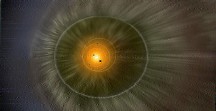
This is Shortwave Radiogram
Please send reception reports to
radiogram@verizon.net
From New Atlas:
Airbus' solar-powered Zephyr smashes flight duration record on
maiden outing
Nick Lavars
9 August 2018
Airbus' Zephyr program has claimed another record, with a
production model unmanned solar-powered aircraft touching down
after more than 25 days in the air. That voyage is the longest
flight ever made by any aircraft, and was achieved on this
particular vehicle's maiden voyage, no less.
Originally built by British defence company Qinetiq and now owned
by Airbus, the Zephyr aircraft is designed to soar through the
stratosphere for months at a time by drawing on the power of the
sun. It is similar to Facebook's now defunct Aquila aircraft in
this sense, and is hoped to one day provide satellite-like
services with the flexibility of an unmanned drone.
The latest version of the Zephyr weighs just 75 kg (165 lb), but
is able to carry up to five times its own weight. Flying above
weather and other air traffic at 70,000 ft (21,300 m), the
aircraft can be controlled from the ground and has the potential
to carry all kinds of payloads, be they to collect
high-resolution imagery, provide voice communications or, as was
the idea with Aquila, beam internet service to underserved areas.
For more than a decade, different variations of the Zephyr
aircraft have been setting off and setting records, with the
first jaunt in 2007 lasting 54 hours and outdoing the previous
endurance flight record, a 30-hour effort from Northrup Grunman's
RQ-4A Global Hawk in 2001.
Since that first journey, the Zephyr and its variants have
routinely flown longer and higher, most notably the prototype
Zephyr UAS' 2010 flight that set three new records, including the
endurance flight record for an unmanned aircraft of 14 days and
21 minutes.
Now the Zephyr S HAPS (High Altitude Pseudo-Satellite) has
one-upped its predecessor in a big way. It took off from Arizona
on the 11th of July and has only now come down to Earth, a total
of 25 days, 23 hours and 57 minutes later. This was the first
outing for the production model Zephyr S, and the team is already
setting its sights on its next voyage.
"This very successful maiden flight represents a new significant
milestone in the Zephyr programme, adding a new stratospheric
flight endurance record which we hope will be formalised very
shortly," says Jana Rosenmann, Head of Unmanned Aerial Systems at
Airbus. "We will in the coming days check all engineering data
and outputs and start the preparation of additional flights
planned for the second half of this year from our new operating
site at the Wyndham airfield in Western Australia."
Source: Airbus
https://newatlas.com/airbus-zephyr-s-flight-duration-record/55824/
Image: Airbus' Zephyr program is developing aircraft that can
serve the same purposes as satellites ...
Sending Pic:263x116C;

This is Shortwave Radiogram
Please send reception reports to
radiogram@verizon.net
THIS WEEK'S IMAGES
The retired New York fireboat John J. Harvey with a paint job
designed by artist Tauba Auerbach. From
cnn.it/2MzsPAx ...
Sending Pic:220x124C;

Fighting the Holy Fire in California, in the air and on land.
From
wapo.st/2MD35D6 ...
Sending Pic:221x113C;
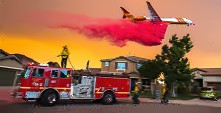
The Perseid Meteor Shower will peak Sunday and Monday. From
wapo.st/2OnLeRe ...
Sending Pic:220x143C;
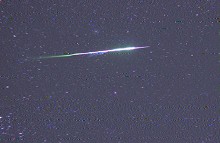
This week's painting is by Mary Pyche. From
bit.ly/2Myx8Mu ...
Sending Pic:180x176C;

Shortwave Radiogram now returns to MFKS32 ...
RSID: <<2018-08-10T20:58Z
MFSK-32 @
7780000+1500>>
This is Shortwave Radiogram in MFSK32 ...
Transmission of Shortwave Radiogram is provided by:
WRMI, Radio Miami International, http://wrmi.net
and
Space Line, Bulgaria, http://spaceline.bg
Please send reception reports to radiogram@verizon.net
And visit http://swradiogram.net
Twitter:
@SWRadiogram
I'm Kim Elliott. Please join us for the next Shortwave
Radiogram.
|
Ending song: https://www.midomi.com/index.php?action=main.track&track_id=100012090302538127&from=voice_search Synergy - Legacy |

http://www.rhci-online.net/radiogram/radiogram.htm
|
QTH: |
D-06193 Petersberg (Germany/Germania) |
|
|
Ant.: |
Dipol for 40m-Band & Boomerang Antenna 11m-Band |
|
|
RX for RF: |
FRG-100B + IF-mixer & ICOM IC-R75 + IF-mixer |
|
|
Software IF: |
con STUDIO1 - Software italiano per SDR [S-AM-USB/LSB] + HDSDR 2.76 stable [2017-02-02] - for scheduled IF-recording |
|
|
Software AF: |
Fldigi-4.00.12 + flmsg-4.0.3 images-fldigifiles on homedrive.lnk |
|
|
OS: |
German XP-SP3 with support for asian languages |
German W7 32bit + 64bit |
|
PC: |
MEDION Titanium 8008 (since 2003) [ P4 - 2,6 GHz] |
MSI-CR70-2MP345W7 (since2014) [i5 -P3560 ( 2 x 2,6GHz) ] |



RSID: <<2018-08-08T18:04Z
MFSK-64
@
6070000+1500>>
Today we do a very special edition. In which we will start half an hour early.
We will broadcast our show, and after 29 minutes our transmitter will go down
for one minute, after which we will start the show again from the start but on a
different antenna, with much
different radiation pattern and possibly also a different range.
Our request to you as a listener is to tell us the difference where you are
between both antenna constellations. So please send your reports to
x@xdv.me x-ray at x-ray delta victor, you can find
the address including info on what software to use for both SSTV and
data reception on our website, which is
www.slowscanradio.com.
www.slowscanradio.com.
So this week you have two chances to get the reception of all images right.
This week we have a lot of picture´s. 16 in total, and much less data than the
other weeks.
We will begin with a summary in MFSK64 of all SSTV standards we will use, in
order of appearance.
After that we will send all the images, and after the last one we do the summary
with explanation and copyright info, just like last week in PSK63R with 20
carriers. PSK63R with 20 carriers. All data in MFSK64 and PSKR this week will be
at 1500 Hz, 1500 Hz.
SSR logo in waterfall
PD50
PD50
PD50
PD50
PD50
PD90
PD180
PD50
PD50
PD50
PD50
PD90
PD180
PD50
PD180
de PA0ETE k
RSID: <<2018-08-08T18:27Z 20xPSK63R @ 6070000+1500>>
PD50
Slow Scan Radio logo
PD50
Glas of German Weissbier in a pub in Amersfoort
Copyright info: own work
PD50
The Marconi Valve Tuner, an early unamplified radio receiver manufactured by the
Marconi Company for use on ships to receive wireless telegraphy signals. It used
the Fleming valve, the first vacuum tube, invented by John Ambrose Fleming as a
detector to rectify the
radio wave carrier and extract the Morse code "dots" and "dashes", The set had
two valves (visible at top); one was a spare in case the other burned out. Date
1914
Copyright info: public domain
PD50
Nikola Tesla's Wardenclyffe wireless station, located in Shoreham, New York,
seen in 1904. The 187 foot (57 m) transmitting tower appears to rise from the
building but actually stands on the ground behind it. Built by Tesla from 1901
to 1904 with backing from Wall
Street banker J. P. Morgan, the experimental facility was intended to be a
transatlantic radiotelegraphy station and wireless power transmitter, but was
never completed. The tower was torn down in 1916 but the lab building, designed
by noted New York architect
Stanford White remains. Date 1904
Copyright public domain
PD50
The 100 kW spark-gap transmitter at the US Navy's first radio communication
station, call sign NAA, constructed in 1913 at Arlington, Virginia. It was a
rotary spark gap set invented by Reginald Fessenden and built by his firm
National Electric Signaling Co. (NESCO)
and was used until 1925. It transmitted by radiotelegraphy on 113 kHz (2650
meters) at ranges exceeding 6000 miles. It was used to communicate with Europe
and Navy radio stations on the East and West coasts, and in the US possessions
of the Canal Zone (Panama) and
Puerto Rico. It also broadcast the first US radio time signal at noon and 10
o'clock each night, provided by the nearby US Naval Observatory, which was
received all over the US and used to set clocks in factories, offices, and
jeweler's stores.
Copyright info: public domain
PD90
Two 625 class engines on a train from Venice to Bassano, August 1973. Date 1973.
Copyright info: This file is licensed under the Creative Commons
Attribution-Share Alike 3.0 Unported license. Author: 8474tim
PD180
Fashion shoot in Majorca
Copyright info: This file is licensed under the Creative Commons Attribution 2.0
Generic license. Author: geishaboy500
PD50
Small shop in Blaricum, the Netherlands
Copyright info: own work
PD50
Travelling funfair in Hilversum, the Netherlands
Copyright info: own work
PD50
Kitten 'Martine'
Copyright info: own work
PD50
Kitten 'Martine'
Copyright info: own work
PD90
Valve radio, Bell Radio-TV Corp. Ltd
Copyright info: Creative Commons Attribution 4.0 International license. Auckland
Museum.
PD180
Jilin Broadcast Tower (China), Taken on 23 September 2010.
Copyright info: Creative Commons Attribution-Share Alike 3.0 Unported license.
Author: Hans Anning
PD50
A 1 megawatt Poulsen arc radio transmitter built by the Federal Telegraph Co. in
1919 for a US Navy radio station in Croix d'Hins, Bordeaux, France. This unit,
which could broadcast continuously at a power of 500 kW and for a short time at
a power of 1 MW, was one of
the largest arc transmitters ever built. Arc converters similar to this, with
slightly lower power of 500 kW, were used in US naval radio stations in
Annapolis, San Diego, Pearl Harbor, and Cavite, Phillipines to provide worldwide
contact with the US fleet.
The Poulsen arc converter, invented in 1903 by Valdemar Poulsen was one of the
earliest continuous wave radio transmitters and one of the first that could
transmit AM (voice). It was a short-lived technology which was used from 1903
until the mid-1920s when it was
replaced by much cheaper and less bulky vacuum tube transmitters. The device
consisted of two horizontal arc electrodes, a water-cooled copper anode (visible
at left) and a carbon cathode (behind unit) in a chamber of hydrogen gas
(center), between the poles of a
powerful electromagnet. A tuned circuit consisting of a coil and capacitor was
connected to the electrodes. When a DC voltage was applied to create an arc,
radio frequency oscillations were generated, which were applied to the antenna.
The transmitter operated in the
very low frequency (VLF) range and had a range of thousands of miles. It was
around 46% efficient and could supply an antenna current of 750 A. Information
from Ellery W. Stone "The Poulsen Arc", Proc. of the U.S. Naval Institute, Vol.
46, No. 2, July, 1920, p.
1066-1067 . Date 1919.
PD180
Nature reserve “Westruper Heide” at the beginning of flowering of the heath,
Haltern am See, North Rhine-Westphalia, Germany, 2015
Copyright info: Creative Commons License “Attribution-ShareAlike 4.0
International” (CC BY-SA 4.0). Author: Dietmar Rabich
de PA0ETE k
RSID: <<2018-08-08T18:28Z 20xPSK63R @ 6070000+1500>>
Today we do a very special edition. In which we will start half an hour early.
We will broadcast our show, and after 29 minutes our transmitter will go down
for one minute, after which we will start the show again from the start but on a
different antenna, with much different radiation pattern and possibly also a
different range.
Our request to you as a listener is to tell us the difference where you are
between both antenna constellations. So please send your reports to
x@xdv.me x-ray at x-ray delta victor, you can find
the address including info on what software to use for both SSTV and
data reception on our website, which is
www.slowscanradio.com.
www.slowscanradio.com.
So this week you have two chances to get the reception of all images right.
--
Weather balloon
A weather or sounding balloon is a balloon (specifically a type of high-altitude
balloon) that carries instruments aloft to send back information on atmospheric
pressure, temperature, humidity and wind speed by means of a small, expendable
measuring device called a
radiosonde. To obtain wind data, they can be tracked by radar, radio direction
finding, or navigation systems (such as the satellite-based Global Positioning
System, GPS). Balloons meant to stay at a constant altitude for long periods of
time are known as transosonde
s. Weather balloons that do not carry an instrument pack are used to determine
upper-level winds and the height of cloud layers. For such balloons, a
theodolite or total station is used to track the balloon's azimuth and
elevation, which are then converted to
estimated wind speed and direction and/or cloud height, as applicable.
History
One of the first people to use weather balloons was Léon Teisserenc de Bort, the
French meteorologist. Starting in 1896 he launched hundreds of weather balloons
from his observatory in Trappes, France. These experiments led to his discovery
of the tropopause and
stratosphere. Transosondes, weather balloons with instrumentation meant to stay
at a constant altitude for long periods of time to help diagnose radioactive
debris from atomic fallout, were experimented with in 1958.
Materials and equipment
The balloon itself produces the lift, and is usually made of a highly flexible
latex material, though Chloroprene may also be used. The unit that performs the
actual measurements and radio transmissions hangs at the lower end of the
string, and is called a radiosonde
. Specialized radiosondes are used for measuring particular parameters, such as
determining the ozone concentration.
The balloon is usually filled with hydrogen due to lower cost, though helium can
also be used. The ascent rate can be controlled by the amount of gas with which
the balloon is filled. Weather balloons may reach altitudes of 40 km (25 miles)
or more, limited by
diminishing pressures causing the balloon to expand to such a degree (typically
by a 100:1 factor) that it disintegrates. In this instance the instrument
package is usually lost. Above that altitude sounding rockets are used, and for
even higher altitudes satellites
are used.
Launch time, location, and uses
Weather balloons are launched around the world for observations used to diagnose
current conditions as well as by human forecasters and computer models for
weather forecasting. About 800 locations around the globe do routine releases,
twice daily, usually at 0000 UTC
and 1200 UTC. Some facilities will also do occasional supplementary "special"
releases when meteorologists determine there is a need for additional data
between the 12-hour routine launches in which time much can change in the
atmosphere. Military and civilian
government meteorological agencies such as the National Weather Service in the
US typically launch balloons, and by international agreements almost all the
data are shared with all nations.
Specialized uses also exist, such as for aviation interests, pollution
monitoring, photography or videography and research. Examples include pilot
balloons (Pibal). Field research programs often use mobile launchers from land
vehicles as well as ships and aircraft
(usually dropsondes in this case). In recent years weather balloons have also
been used for scattering human ashes at high-altitude by companies such as
Stardust Ashes, founded by Chester Mojay-Sinclare.
The Weather balloon was also used to create the fictional entity 'Rover' during
production of the 1960s TV series 'The Prisoner' in Portmeirion, Gwynedd, North
Wales, UK in September 1966. This was retained in further scenes shot at MGM
Borehamwood UK during 1966-67
High-altitude balloon
High-altitude balloons are manned or unmanned balloons, usually filled with
helium or hydrogen and rarely methane, that are released into the stratosphere,
generally attaining between 18,000 to 37,000 metres (59,000 to 121,000 ft; 11 to
23 mi). In 2002, a balloon
named BU60-1 attained 53.0 km (32.9 mi; 173,900 ft).
The most common type of high-altitude balloons are weather balloons. Other
purposes include use as a platform for experiments in the upper atmosphere.
Modern balloons generally contain electronic equipment such as radio
transmitters, cameras, or satellite navigation
systems, such as GPS receivers.
These balloons are launched into what is termed "near space" - defined as the
area of Earth's atmosphere between the Armstrong Limit where pressure falls to
the point that a human being could not survive without a pressurised suit, and
the Kármán Line where aeronautics
must take over from aerodynamics in order to maintain flight.
Due to the low cost of GPS and communications equipment, high-altitude
ballooning is a popular hobby, with organizations such as UKHAS assisting the
development of payloads.
History
The first hydrogen balloon
In France during 1783, the first public experiment with hydrogen-filled balloons
involved Jacques Charles, a French professor of physics, and the Robert
brothers, renowned constructors of physics instruments.
Charles provided large quantities of hydrogen, which had only been produced in
small quantities previously, by mixing 540 kg (1,190 lb) of iron and 270 kg (600
lb) of sulfuric acid. The balloon, called Charlière, took 5 days to fill and was
launched from Champ de
Mars in Paris where 300,000 people gathered to watch the spectacle. The balloon
was launched and rose through the clouds. The expansion of the gas caused the
balloon to tear and it descended 45 minutes later 20 km (12 mi) away from Paris.
Manned high-altitude balloons
Manned high-altitude balloons were used from the 1930s to 1960s for research and
in seeking flight altitude records. Notable manned high altitude balloon flights
include three records set for highest skydive, the first set by Joseph Kittinger
in 1960 at 31,300m for
Project Excelsior, followed by Felix Baumgartner in 2012 at 38,969m for Red Bull
Stratos and most recently Alan Eustace in 2014 at 41,419m.
Uses
Unmanned high-altitude balloons are used as Research balloons. Common uses
include weather balloons, as well as atmospheric and climate research. They are
also widely used to collect data and imagery from near space. High-altitude
ballooning is used for scientific
applications such as submillimetre astronomy.
High-altitude balloons have been considered for use in space tourism. Private
companies such as zero2infinity and World View Enterprises are developing both
manned and unmanned high-altitude balloons for scientific research,
commercial purposes, and space tourism.
High-altitude platform stations have been proposed for applications such as
communications relays.
Amateur high-altitude ballooning
High-altitude balloons are often flown by students and by amateur groups to
altitudes on the order of 30,000 m (98,000 ft) for both scientific and
educational purposes, and have become popular among educational institutions and
enthusiasts as they do not require many
resources for conducting launch.



RSID: <<2018-08-13T07:30Z
MFSK-32
@
7730000+1500>>
Welcome to the BSR Radiogram from BroadSpectrumRadio and KG5JST
Produced by James M. Branum
www.broadspectrumradio.com
August 6, 2018
QSL reports are welcome at
broadspectrumradio@gmail.com
RSID: <<2018-08-13T07:31Z
MFSK-32
@
7730000+1500>>
RSID: <<2018-08-13T07:31Z MFSK-32 @ 7730000+1500>>
And now it’s time for some commentary, some thoughts from myself about ham
radio. Specifically about its future.
While there are many new hams being licensed each year, it is also true that the
majority of active hams today are getting older and older. Some people, who I
call the grumpy doomsdayers, insist that the problem is cultural in nature, that
younger people are lazy and
unwilling to engage their attention spans in a hobby that doesn’t always reward
quick and superficial efforts.. And then folks insist that the reason that “ham
radio is dying” is because we have lowered the standards, we quit insisting that
everyone learn morse code,
and consequently are stuck with a radio service that is little better than a
glorified form of CB radio.
Well I’m not a grumpy doomsdayer, in part because I think that this hobby is
about to enter into another golden era, as more and more folks, young and old
alike, get tired of being mere consumers of communication technology and instead
want to learn and engage with
it from a DIY hobbyist perspective.
But I do think there are things that our hobby can do, which can make it easier
for new folks to get involved, which is what I want to talk about in this
segment.
I think there are three main obstacles to getting new folks into ham radio,
three hurdles that some will overcome but that also discourage and dissuade way
too many people from getting turned on to ham radio.
These obstacles are: (1) The Test, (2) The Cost, and (3) The technical
challenges.
First, the test…
Sending Pic:100x100C;
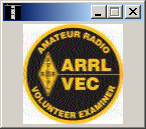
RSID: <<2018-08-13T07:34Z MFSK-32 @ 7730000+1500>>
RSID: <<2018-08-13T07:34Z MFSK-32 @ 7730000+1500>>
This issue is on my mind because I recently took a ham radio licensing exam, at
the annual HamHoliday, a ham radio convention in Oklahoma. I’m currently a
General class operator and I’ve been studying for the Extra class exam, so I
decided to take a shot at it (which
I was given an extra nudge to do so by the kind folks at the SCARS VE Testing
team from the Norman area, who provide the VE testing session free of charge,
rather than charging the customary $15 fee to cover expenses). Sadly I didn’t
pass, but I came close, missing
it by only 2 questions...so I will take it again, probably in September.
But while taking my exam, I got to visit with a fair number of other test
takers, a few folks like me taking Extra class tests, several taking general
class exams, but most taking Technician class exams. Lots of folks left the
testing room, ecstatic in their victory
over the test, but quite a few others left crushed by the experience,
discouraged and convinced that they were “stupid.”
The reality is that the folks who failed the exam are likely good folks who
would be conscientious and thoughtful operators, particularly if they had a good
elmer or mentor to work with them, but the test stands in their way. I’m sure
some of these folks just didn’t
study enough, but I think it is much more likely that many of those who had
failed, had studied their butts off, and are just bad test takers.
The licensing exam exists as a measure of minimal competency, but I wonder if it
really serves that purpose? Some of the test questions are relevant and helpful
but others are irrelevant, confusing or downright esoteric. Surely there could
be a better way to do this.
The ARRL has proposed some options and other commentators have done so as well.
Some ideas being discussed is a revival of the old Novice class, with an easier
entry-level test, as well as expanded HF privileges to Technicians to provide
more early excitement to new
hams. As expected the Grumpy Doomsdayers have attacked these ideas arguing that
this will cheap the hobby, but these folks are missing some key points.
First, there is nothing sacred about our current testing system. It has been
changed in the past and can be changed in the future.
And second, if the test is designed to weed out the problematic operators, it is
failing in this mission, primarily because most of the problematic operators out
there today are folks who have been on the air for decades. I’ve learned that
any time I hear racist
jokes, intentional interference and just general rudeness, it is rarely ever
coming from someone who is a new ham.
And finally, lot’s of folks have test-taking anxiety and many have learning
disabilities. Certainly these obstacles can be overcome by the stubbornly
committed, but these obstacles do push some away altogether and delay others
from entering the hobby.
So I say let’s be creative, let’s rethink the test.
2. The Cost
Ham radio can be done cheaply but it is not easy to do so. VHF/UHF is easier to
pull of on a budget, but HF is something else. What most hams would consider an
entry-level transceiver will run $500-1000. Certainly that is cheaper than what
some spend on their hobbies
but it is not chump change either, and it serves to keep a lot of folks out of
the hobby, not only young people but also retirees on a fixed income, as well as
middle aged folks who are just trying to make ends meet.
The grumpy doomsdayers tend to say “tough cookies,” mostly because they
fundamentally only want folks like themselves in the hobby. And unfortunately
some ham radio organizations and magazines have a conflict of interest on this
issue, since they depend on the
advertising dollars paid by the major equipment manufacturers, to pay the bills.
But this issue has to be addressed. Certainly some hams are very content to stay
with being VHF/UHF operators, focusing on public service in their communities
and chatting with their friends, but many folks, including SWL’s got into ham
radio because we wanted to be
on the shortwaves… we wanted to be heard hundreds of kilometers away, even on
the other side of the globe. So we have to find better ways to make the hobby
more affordable, especially to get on HF.
Which leads us to…
3.The Technical Challenges
As I just mentioned, cost is a barrier to getting into ham radio, and so
beginners have to find affordable entry points.
For VHF/UHF, Baofeng HT’s have been a game changer. The grumpy doomsdayers hate
them, but the reality is that for most hams in major metropolitan areas, the
Baofeng (if equipped with a better antenna, such as a longer Nagoya antenna)
will hit local repeaters, all for
a total investment of under $50. But if you live in a rural area and/or want to
do simplex work, the cheap HT’s can be frustrating. Still I’m glad I ignored the
grumps and started with them.
Sending Pic:150x139C;
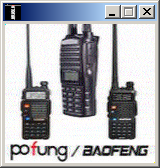
RSID: <<2018-08-13T07:42Z MFSK-32 @ 7730000+1500>>
RSID: <<2018-08-13T07:42Z MFSK-64 @ 7730000+1500>>
As for HF… there aren’t any easy solutions…
The cheapest HF transceivers are kit-built, but this is a big jump for a new ham
to take on, and so most will go with a Multi-mode/Multi-band radio that is
already built. But due to cost constraints, many of us will end up going QRP,
doing what I did and starting
with something like the Yaesu FT-817, a great radio by the way, but one that is
still QRP. On a good day, when the conditions are right, I can talk to someone
on the other side of the country via SSB, but on most days I struggle to be
heard on our local 10 meter net,
with the control operator being about 12 miles away. Of course, some insist that
CW is the only answer, but let’s be frank. Morse code is hard to learn and hard
to effectively operate.
Sending Pic:250x155C;
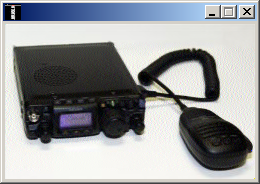
And what other options are there?
Remotes? --- Yes, they can be fun (I’ve used the ones from both
Remotehamradio.com and RCFORB) but
in most cases they are not cheap and frankly they are not as much fun as running
your own radio.
Thankfully two recent developments have helped to provide some hope for
financially challenged hams.
First, there are the weak signal digital modes, especially at this moment FT-8.
I know the grumpy doomsdayers hate these modes, but I love them. To actually
make cross-country and even DX contacts on 5 or less watts power, on a
consistent basis, is unbelievably
awesome…. It’s still not easy, but it is much, much easier than QRP SSB.
Sending Pic:200x200;
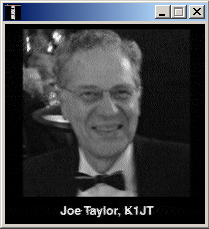
But secondly there are the new SDR
transceivers, some of which are kit built, but I hope in time will also be
available in pre-built and/or easily-assembled forms.
So… there’s hope.
What I want to close with is directed at any new hams out there, folks who have
passed their technician class exams but are considering their next steps, but
also for any SWL’s, shortwave listeners who are nervous about taking their exam…
I want to share some things that I wish someone had told me a few years ago,
when I was first starting in this crazy adventure…
1. Go cheap for VHF/UHF. --- Start off cheap. You can always get a fancier radio
down the road if you fall in love with VHF/UHF, but for now buy the cheap
Baofeng, Wouxun, etc. And don’t believe the grumps out there… they may not be
perfect, but they get the job
done.
2. But when you go cheap, be smart about it. --- The stock antenna on many
Baofengs is crap. I don’t know why, but these antennas are called rubber duckies,
and they are worthless. Instead spend $10 or so and get a better antenna, such
as a Nagoya. Also you’ll want
to spend another $10 to get a programming cable, so you can use the CHIRP
software to program your radio with all of your local repeaters.
3. Speaking of programming those Baofengs --- Most will let you program the
frequencies for NOAA weather radio, trains, GMRS, MURS, FRS, etc. Obviously you
can’t legally transmit on these frequencies, but you can listen (at least here
in the USA).
4. For HF, go cheap on antennas --- Seriously, a dipole wire antenna can do
wonders. Building your own is very do-able. But… you likely will need a tuner.
There are high priced ones out there, but you can find them new for under $100
from MFJ or used for even less
(my current tuner I got for $50 used).
4a. Batteries
5. For the transceiver --- No easy answers here. I love my Yaesu but I paid too
much for it. If I was starting new today, i would probably look at one of the
SDR-based kit builds.
6. For digital modes --- I’ve heard good things about the Signal Link and other
interfaces, but I ended up going with something much cheaper, the Wolfilink. It
is designed to link up a cell phone or tablet to a transceiver but with the
right audio cables and splitter
it can connect with a computer.
Sending Pic:200x125;

7. Be patient and set your own goals
--- Unless you are lucky and can afford a 100 watt radio right away, you can’t
judge yourself by comparing yourself to others. Instead set your own goals.
That’s it for this week.
Don’t forget, QSL reports are welcome at
broadspectrumradio@gmail.com.
And keep an eye out for this special event station, W5G:
RSID: <<2018-08-13T07:49Z
MFSK-64
@
7730000+1500>>
RSID: <<2018-08-13T07:49Z MFSK-64 @ 7730000+1500>>
Sending Pic:300x227;
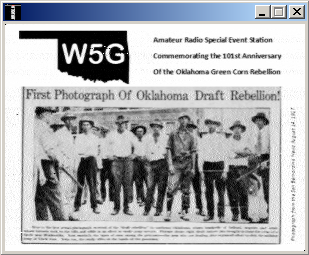
RSID: <<2018-08-13T07:51Z MFSK-64 @ 7730000+1500>>